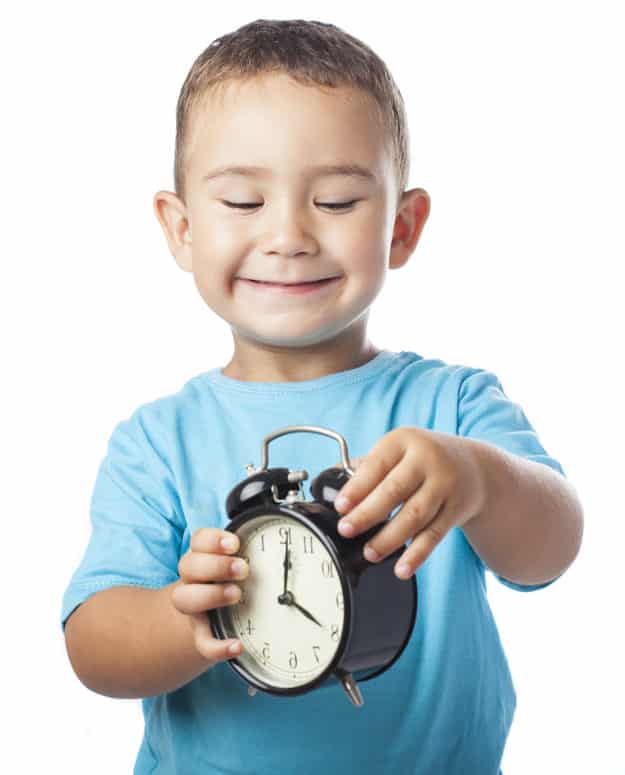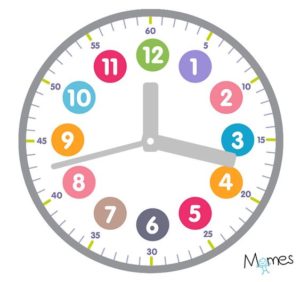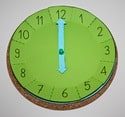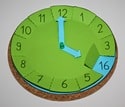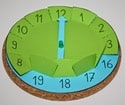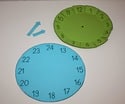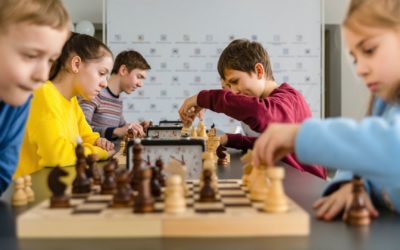Teaching a child the time may seem complicated. However, some children learn it before they see it in school! The most important thing is to follow the child's rhythm and to have a good method. This is why, Kidlee brings you today his tips for teaching children to tell time.
How old do you have to be to learn to tell time?
Around the age of 5-6 years, the child becomes more and more aware of the world around him. He is interested in the days and wants to know why adults are so concerned about what the watch shows (pun intended!), he also wants to learn to read it!
Even if he starts to ask for the time at the age of 3, it is not until he is 7 that he will learn it at school. In ce1then the learning will be deepened in grade 2 revised in cm1 and possibly reviewed in cm2.
However, some parents may wish to teach their children the time at cp which is quite feasible.
It all depends on the child's interest in learning it, and whether or not they are ready.
Learn to tell time step by step
Organize a small observation session. Take a clock where every detail is clearly visible.
To begin, we observe the turn of the dial containing numbers and hands.
First, we notice that there are large numbers from 1 to 12 inscribed around the dial: These are the hours ! They are indicated by the small needle ! Take the time to read the numbers one by one and point out that we go to the right after 12.
Then explain that the day consists of 24 hoursTherefore, as the dial only displays 12 h, during the day the small hand will go around the dial twice to finish the latter.
Let's move on to the minutes and seconds, still through observation, draw his attention to the small lines around the dial. We can see that the numbers go 5 by 5. By counting them, always by making the turn of the dial, we note that there are 60 small lines, the minutes !
The large needle indicates the minutes! You should know that the number 60 is not noticed for nothing! But because a hour is equal to 60 minutes ! So, once the big hand makes a complete turn, it means that one hour has passed.
Finally, we have the second handthe fastest moving hand. The second hand allows to read the seconds ! Once the second hand goes around, it gives us one minute. Therefore, the big hand will advance by one stroke, everything is relative!
As you can see, a minute is equal to 60 seconds.
The seconds are the ones that go by the fastest, then come the minutes and finally the hours !
Tips for learning the time:
Associate the time of day with moments of the day
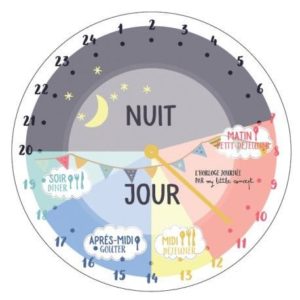
We eat lunch at noon, sleep at 9 p.m., get up at 7 a.m., go to school at 8 a.m. .... Try to link the different activities of children to their schedules. From the age of 5-6, children begin to become aware of the world around them, and it is then possible to indicate a few benchmarks so that he finds himself in his day.
You can also time the minutes for brushing teeth, tidying up, getting dressed... This will help him to familiarize yourself with the concept of time more easily.
Little by little, the child will learn to situate himself in time and will integrate this into his daily life.
You can also do various artistic by making a clock!
Clock Morning/Afternoon
As we have seen before, the turn of the dial is 12 hours. There are 24 hours in a day, so the little hand will go around the dial twice in a day.
This is where At the time of the morning and afternoon time enter the scene! This DIY will allow you to make a clock to learn the 12 hours of the morning and afternoon! The blue dial shows the morning time, and the green dial shows the afternoon time. The child can try to guess the afternoon time and correct himself by noting the relative number!
Clock Hour/Minutes:
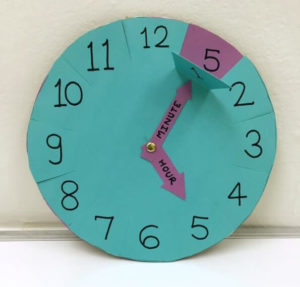
On clocks, the minutes are not usually indicated as clearly as the hours, but we know that the large hand goes around the dial in 1 hour and that 1 hour = 60 minutes.
To find your way around, you need to know that each time you advance a number that represents the hour, you add 5 minutes. For example, 1 is 5 and 2 is 10 until you reach 60.
This clock allows you to visualize this. It is also possible to practice by hiding the minutes and guessing what it represents, for example 5 is 25 minutes and so on.
The complete learning clock:
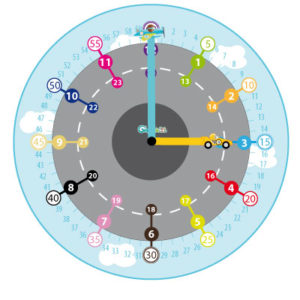
This learning clock uses worlds and drawings that "speak" to children.
The plane represents theminute handThe car is the only one that goes into the sky. The car represents thehour hand and drives on the road. With these hands, you can explain that we take the car before taking the plane. Therefore, you start by reading the hour and then the minutes!
You will find two clocks to print on the site Graphick Kids. The first one is very detailed with all the minutes marked and the hours in 12 and 24. The second one counts the minutes from 5 to 5 and the hours from 1 to 12.
Learning to tell time in the Montessori pedagogy
The Montessori pedagogy proposes to revive sensory one hour of the child's time. How do you do it? It is very simple! By offering him to walk around for an hour!
Then, explain to him how the big hand turned during that hour as you walked along. Don't hesitate to repeat the walk several times, so that this information will help him/her in his/her spatial and temporal references.
Montessori clock
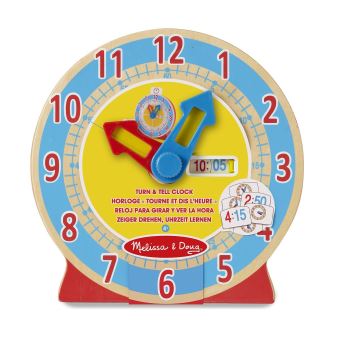
This Melissa And Doug clock Montessori is easy to handle by children thanks to its large plastic hands. It is also equipped with a small flap that allows to read the time in numbers or to hide it depending on the exercise.
This clock Montessori allows you to learn, understand, manipulate and self-correct in order to progress! Turn the small hand to represent the hour, the large hand for the minutes and check if it is right! However, you will have to note that there is no afternoon time! Find the clock here.
